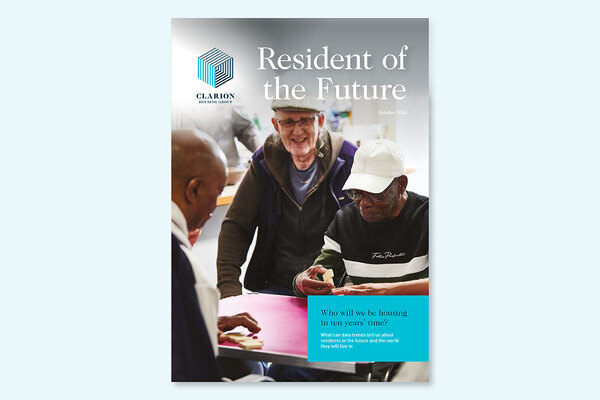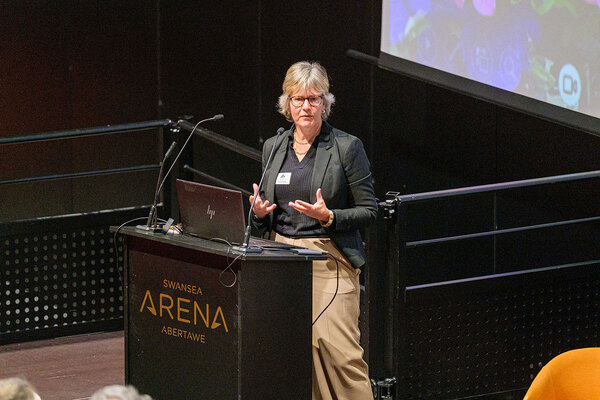Is investing in existing stock coming at the cost of reducing building plans?
Social landlords must meet tenant needs, but could investment come at the expense of building? The solution lies in tech that joins up data, says Julie Lorraine of predictive analytics software supplier Mobysoft

In association with:
![]()
Social landlords are trying to both build more homes and improve their current stock to ensure it meets decency standards, residents’ expectations and government targets for sustainability. But is this really possible in a world of restrictive budgets and increasing costs? What options are available to ease financial pressures on landlords?
Recently, Mobysoft, a data analytics business that helps UK social landlords optimise revenue collection and improve repairs quality and sustainability, commissioned a survey of 100 top-management decision-makers at housing associations.
Inside Housing asked Julie Lorraine, Mobysoft’s strategic director, to reveal what the results say about the challenges and investment priorities facing social landlords.
What are the main challenges landlords say they face?
Accessing land for development (22%) came out on top, although this was followed closely by the related challenge of meeting demand for affordable homes (20%) – ahead of the government’s social housing rent cap (19%), economic uncertainty (19%) and challenges around rent arrears (18%).
Perhaps surprisingly, damp and mould were cited as the primary issue for just 15% of respondents. That said, more than a third (37%) have introduced specialist training for their people on managing damp and mould, and a similar number (36%) are providing residents with guidance on how to reduce the likelihood of it arising.
These responses tell the story of the current state of housing in the UK: housing providers know they must meet tenant needs, but could funding this investment be at the expense of building new homes?
There’s no getting away from the fact that these two demands are both opposing and inextricably linked. You can neither provide quality homes and services without investing in existing stock, nor support everyone to find the home they need without adding new stock. But given that everything is needed now, it’s all very ‘chicken and egg’.
Given that landlords are being asked to build more while improving the quality of their existing homes, how can the sector remain an attractive long-term, low-risk investment?
Securing capital market funding (30%) and building more homes (30%) were understandably cited as top growth strategies by registered social landlords.
Investor confidence is a huge part of this, but nurturing that confidence is about more than financial standing. It’s the ability of social housing providers to demonstrate performance in line with their raison d’etre. In other words, are they delivering the social value that attracted these social investors in the first place? That comprises delivery from a quality service perspective and a real understanding of tenants’ needs, as well as a clear strategy for the delivery of existing and future homes that meet those needs.
Sustainability and future-proofing are, of course, other essential steps in making the sector an attractive, low-risk investment.
Is the current climate having an impact on housing associations’ operating costs?
Our research shows that 29% of housing associations are updating their repairs processes to make them faster and more efficient, and 51% are investing in more frontline staff. At the same time, pressures to reduce overhead costs mean a third (34%) are planning to reduce their headcount.
This points to a need to streamline overheads, shifting expenditure from ‘the costs of being’ to invest more in ‘the cost of doing’. This may not mean spending less, but simply applying more of the available resources to outcomes rather than inputs. Technology is, of course, going to play a big part in that.
Is lack of data an issue? What technology can landlords use to find and use data more efficiently?
We are not in a situation where we have an absence of data – there is plenty of it. The issue is that this data is located in a lot of different places within organisations.
Social landlords are working with a lot of different systems, many inherited from past mergers decades ago, with additional layers added when different customer offerings were introduced. They may even have consolidated some of this into backward-looking performance management reports. The question is whether that intelligence is being shared effectively.
Rather than look for a single system that does everything, the answer lies in technology that accesses existing systems in real time, joins data together from a variety of sources, and sends the right insight, to the right people, at the right time.
What are the ethical issues around this technology?
Data transparency, integrity and permissions are the major stumbling blocks.
The cardinal rules are that all data must be necessary, internally sourced, accurate and consented to by the customer.
Ethical customer-service issues can crop up when landlords’ systems rely on third-party data to make predictions: whether a customer is going to pay on time, for instance, by looking at whether they’ve paid their phone bill, and pre-emptively sending them a letter. This approach to predicting human behaviour is not only intrusive and anxiety-inducing, but shows little appreciation for the canny decision-making those on the lowest incomes must often make: robbing Peter to pay Paul – ie, not paying their mobile phone bill this month so that they can pay rent.
Using data in this way can result in inaccurate assumptions being made, which is incredibly damaging to trust between landlord and tenant. If we as a sector are going to use data and insight to shape services that affect tenants’ lives, we have to ensure it is accurate.
30%
Proportion of housing association respondents to a Mobysoft survey which cited securing capital market funding as a top growth strategy
51%
Proportion of respondents which are investing in more frontline staff
At a time of mounting cost pressures, should landlords be looking at extracting the best data in the best way from their existing systems, rather than investing in brand new ones?
Totally. A brand new system is rarely the best solution and can be wasteful, particularly given that technology is changing constantly. Instead, find a solution that will enhance and stitch together the data strands you already have, ideally with artificial intelligence embedded so that it can operate in real time across traditional service boundaries, transferring actionable insight to the various parts of the organisation at the right time.
How will private landlords affect demand in the social housing sector, particularly if new tax rules cause a number of smaller ones to offload their properties?
Currently, housing associations are expected to do everything: take investment risk, build, rent and then manage. The landscape may shift as we ask whether it’s necessary for social landlords to own as well as manage stock. Perhaps in the future a new breed of investors can own properties and leave social housing management to those with the experience and expertise to do so. It would be a seismic shift, but it might be needed.
Sign up for our development and finance newsletter
Already have an account? Click here to manage your newsletters











